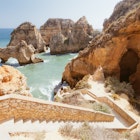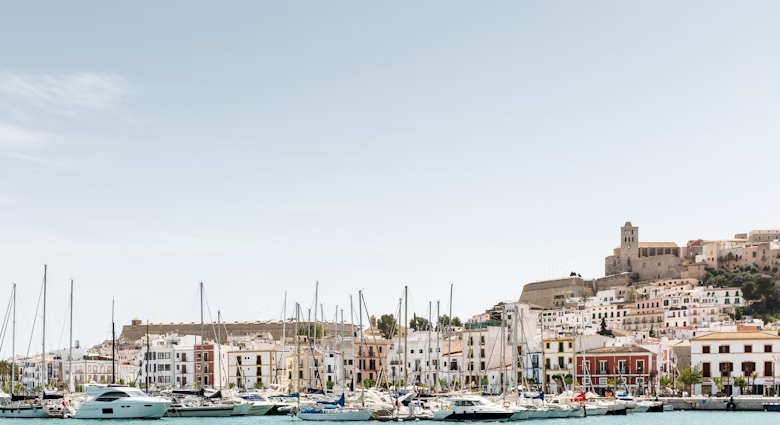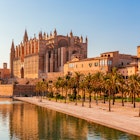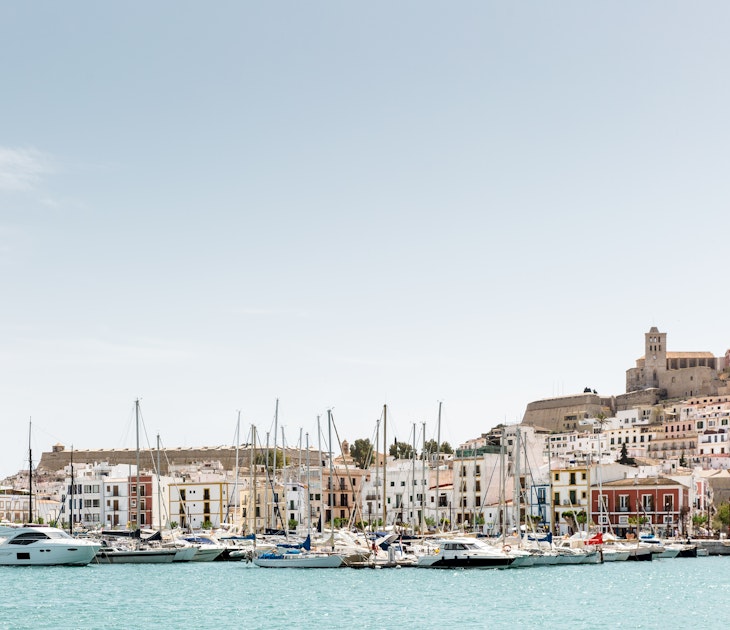

Whether you choose to bask on the beach or get active, there's no bad time to visit Mallorca. kovop/Shutterstock
Basking in the balmy waters of the Balearic Sea, 128 miles (206km) south of Barcelona, Mallorca offers something for every season, from lively cultural festivals to serene natural beauty. The island's vibrant capital, Palma de Mallorca, is a great year-round destination, while spring, summer and fall each lend a unique flavor to the rest of the island.
Whether you’re here for the beautiful beaches, the nightlife, the history or the tranquil villages and towns of the interior, here’s everything you need to know about when you should visit Mallorca.

April to early June and September to October are best for warm days and smaller crowds
Falling either side of the busy summer months, Mallorca’s shoulder seasons are beautiful times to visit the island, with temperatures averaging around 20°C (68°F) in spring and 25°C (77°F) in the fall.
This is the perfect temperature for meandering round the medieval streets of Palma de Mallorca and spending time exploring the villages and towns inland from the coast – be prepared for lots of walking!
While skies tend to be clear, there’s a chance of rainfall, with around four or five days of rain per month from April to June and September to October. During either period, you’ll see fewer crowds and find cheaper deals on flights and accommodations.
Spring brings soft clouds of almond blossom to the hills, and wildflowers dot the countryside. With fewer visitors, beaches are quieter and even more relaxing. If you come in April, be sure to attend the regatta, a major international sailing event in Palma.
The fall is harvest time on the island, and locals mark the grape harvest in September with three weeks of celebrations in the village of Binissalem for Festes de la Verema – a wonderful time to enjoy nature in the middle of the island.
Early fall is still pleasant for swimming and water sports, though thunderstorms are quite common in late August. October is usually the wettest month but this refreshes the vegetation after the dry summer.
Don’t miss Nit de l’Art in the third week of September, when Palma’s museums and art galleries open their doors to the public for a gala night of art, exhibitions, performances and more.

June to August is the season for beach days, music festivals and nightlife
Summertime is all about the beaches and lazy days spent alfresco, with plenty of outdoor dining, music festivals and open-air cinema screenings at night. Locals get into the summer spirit with celebrations such as Festa de la Verge del Carme on July 16, marked by processions in seaside villages.
Mallorca gets hot in summer, with temperatures between 28°C (82°F) and 35°C (95°F). It’s not ideal for strolling around, but perfect for beach days in the sun. The Mediterranean Sea warms up too, making this the ideal time of year for swimming. June and July are the driest months – July receives an amazing 346 hours of sunshine but sea breezes help cool the island, and morning and evening temperatures are lovely.
Summer is the peak tourist season in Mallorca, and you’ll find that it can get extremely crowded in popular destinations such as Magaluf, Playa de Palma and Palma's Old Town. Many people love the buzz in these vacation spots in the summertime – if you enjoy beach clubs, bars and exciting nightlife, this is probably the season for you.
On June 23, local people celebrate Nit de Foc – the Night of Fire – in Palma. The evening before the midsummer feast of St John is embraced with fiery abandon; the correfoc (fire running) begins in Parc de la Mar, and fireworks blaze while costumed demons leap and dance. City beaches host musical groups and bonfires and crowds party til dawn.

In July, Mallorca celebrates DÃa de la Virgen del Carmen, honoring the patron saint of sailors and fishers. Residents of port towns across the island carry statues of the Virgin Mary in procession and boats are blessed and torches lit.
In August, buy tickets in advance for the excellent , where internationally renowned pianists perform under starlit skies in the grounds of the Real Cartuja in Valldemossa.
Also, check out Cinema a la Fresca – a program of free open-air movie screenings in public parks in August. For something more active, Marxa des Güell a Lluc a Peu is a traditional pilgrimage walk by candlelight from Palma to the sanctuary of Lluc, high in the Tramuntana Mountains.
With the sunny weather and busy cultural calendar, Mallorca welcomes more tourists in summer than at any other time of year, and accommodations and flights can be significantly more expensive. Book your trip well in advance.

November to March is the best time for outdoor activities, slow travel and savings
Winter unveils a quieter, cooler side to the island. Palma twinkles with holiday lights and Christmas markets line Passeig d'es Born, the city’s most appealing boulevard. But the Mallorcan winter is mild compared to most parts of Europe, with daytime temperatures ranging from 12°C (54°F) to 17°C (63°F). Although this is the wettest time of year, it doesn’t rain all the time, with only occasional showers to disrupt exploring.
The cooler temperatures are ideal for hiking and outdoor activities such as exploring the villages of the interior with a rented bike, scooter or car – the perfect Mallorca road trip! With fewer visitors to the island, there’s less traffic and more space to explore at your own pace and revel in the easygoing vibe of slow travel.
This time of year is also ideal for experiencing Mallorca taste buds first, like the locals do, in Palma’s authentic Mallorcan restaurants. However, be aware that many tourist-oriented restaurants and hotels close in winter.
On January 5, Los Reyes (Three Kings) parades take place all around the island. Palma starts the year with the festival of Sant Sebastià n, when fireworks and live music fill the city’s stone-lined plazas.
Carnival kicks off the Lenten season across the island in February. In Palma, a children’s procession, Sa Rueta, is followed by a grown-up version, Sa Rua, with pumping music, costumes and colorful floats.
Note that March and April can be a busy time thanks to the Easter and Semana Santa festivities. You can follow the Holy Week processions around the island; begin in Palma on Holy Thursday evening, then head to Pollença for its moving torchlit Good Friday Davallament (Descent from the Cross). On Easter Sunday, head to S’Encuentro in Montuïri. For any of Mallorca’s winter celebrations, book accommodations well in advance.
This article was adapted from the published in February 2025.
Explore related stories



 ActivitiesSpain itineraries: 6 great routes that cover the whole country
ActivitiesSpain itineraries: 6 great routes that cover the whole countrySep 19, 2024 • 15 min read






